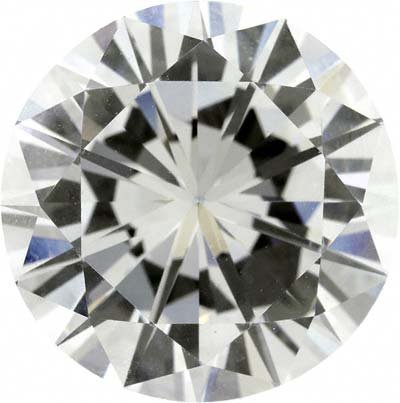| The Very Highest Quality Diamond Information... |
| Brilliant Cut Diamonds |

|
|
|
History of the Brilliant Cut
It is difficult to state when the brilliant cut first came into existence. The Perruzzi cut which was developed around 1700 had 58 facets, 33 on the crown or upper part, and 25 on the pavilion or lower part, below the girdle. This is the same number of facets as a modern brilliant cut. The Perruzzi cut produces a cushion shape, square to oblong with rounded sides and corners. Later developments of the same cut are known as Brazilian cut, Lisbon cut, and old mine cut.
Round variations of these cuts eventually evolved, and are have names such as old European cut, English round cut, or Victorian cut.
Between about 1914 or 1919, the mathematician Marcel Tolkowsky calculated the optimum angles for round diamonds, and published a paper "Diamond Design", which gave specifications for an ideal cut to maximise the brilliance and scintillation of diamonds.
As a result, diamanteers started to produce polished diamonds with better proportion. For most diamonds, this meant losing some weight by making a shallower stone.
Some time before Tolkowsky, some American producers had started to experiment, and had already produced some diamonds of better proportion by sacrificing some weight for better brilliance.
Since then, there have been numerous improvements on the Tolkowsky proportions, including the Eppler cut (actually at least three cuts depending on size), and this is often referred to as the European cut, and the Scandinavian standards institutes published further improvements in 1970.
We tend to regard anything similar to a Tolkowsky proportioned cut or later as a "Modern Brilliant Cut".
Advantages of the Brilliant Cut
Some rough diamonds lend themselves more readily to be cut into one shape rather than any other. Whenever this occurs, the cutter must decide which shape will make the most attractive finished diamond, and be worth the most money. The "natural" shape for polishing most rough diamonds is often octagonal, which is why many early diamonds are this shape. Because round brilliant cuts give the most sparkle, and the best overall appearance, it will often be the automatic choice for most cutters unless there is strong reason to cut to a different shape.
What Makes Brilliants Better?
The technical reasons why a brilliant cut diamond is usually the best depend on the behaviour of light when it is reflected or refracted at junctions between the media it is travelling through. These media are air and diamond. The most important aspect of reflection is "total internal reflection", and its angle.
These factors influence the optimum angles between facets. A simple design criterium would be for the diamond to reflect the maximum amount of light to the viewer, through the crown. Refinements on this take into consideration the amount of dispersal or scintillation also. Whatever model is taken to be the optimum, the angles at which the diamond is facetted determine other factors such as the depth, and the proportion of the crown to the pavilion.
Modified Brilliant Cuts
Most oval, pear, marquise, and heart shaped diamonds are variations on the brilliant cut, in which case their facet names remain the same as for round brilliant cuts.
More About Cut & Shape of Diamonds
| ...at the Lowest Possible Price |
|
32 - 36 Harrowside, Blackpool, Lancashire, FY4 1RJ, England. Telephone (44) - (0) 1253 - 343081 ; Fax 408058; E-mail: The URL for our main page is: https://24carat.co.uk | Chard(1964) Ltd |